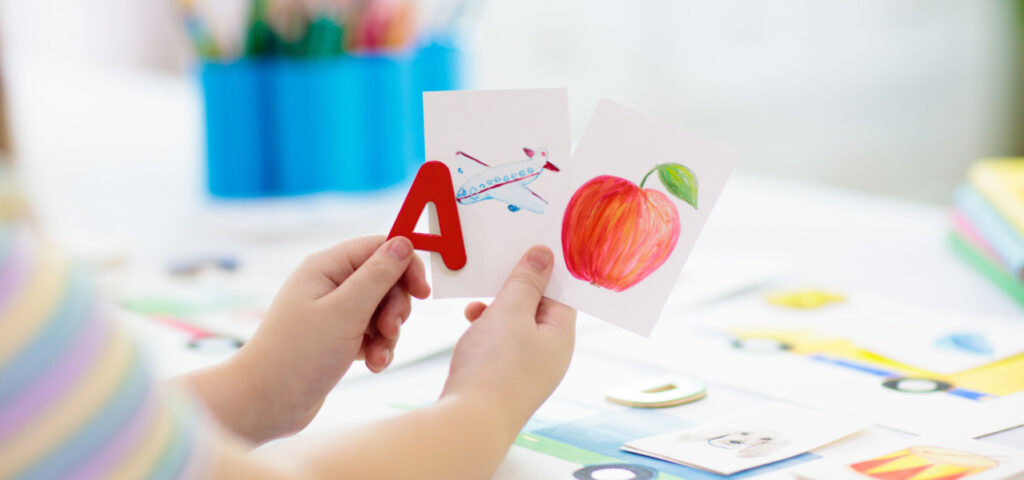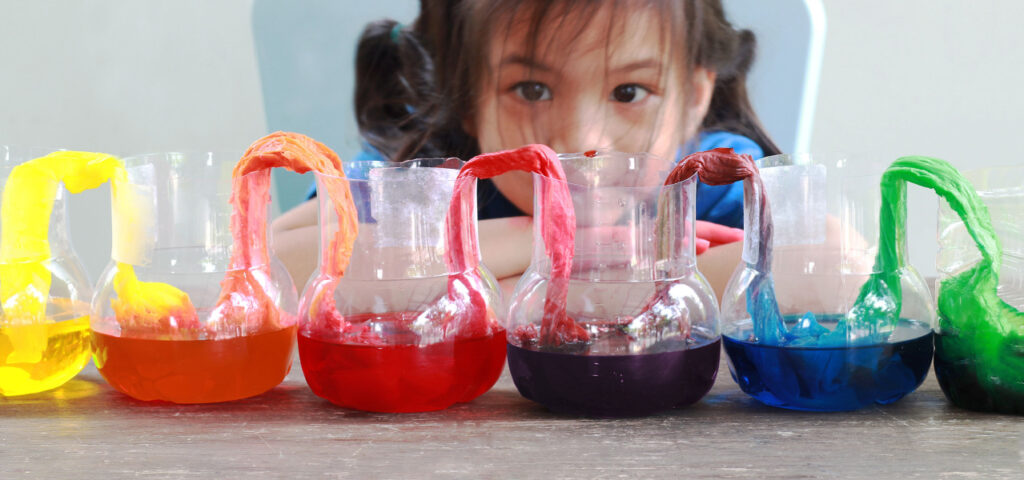
Bring All Learning Styles into Your Homeschool
The idea behind learning styles suggests that tailoring educational methods to an individual’s preferred style (visual, auditory, or kinesthetic) can help enhance their learning experience and improve knowledge retention. The validity of learning styles has been widely challenged and debunked in recent years by scientific research, which has found that using a single learning style exclusively does not lead to better learning outcomes.
Instead, researchers are finding that children learn in a variety of styles and may learn one subject or lesson better when it’s presented visually and another when it’s presented kinesthetically. Because of this, it’s valuable for home educators to understand the different learning styles so that they can present lessons in a variety of ways.

For example, if your child is struggling with a lesson on paper, they may need to talk through it or try a hands-on activity to connect with the concepts. Having insight on all learning styles can help you present lessons in multiple ways to find what works for your child at that moment. Remember to keep a bigger picture in mind when noting their engagement and comprehension, which can be influenced by the topic of study, how materials are being presented, the time of day, their energy levels, and more.
Homeschool+ is designed to support all learning styles and presents information visually and audibly and provides hands-on lesson plans that bring kinesthetics into learning.
Visual Learning
Visual learning uses visual aids, such as charts and diagrams, to help share information. It can also include adding pictures or videos or sharing concepts in a way that a child can see, like pointing out the numbers or letters you encounter on a daily basis.
Here are some examples of strategies and activities that can help support visual learning in different subjects:
Math
- Use visual aids like bar models, number lines, or geometric shapes to represent mathematical problems or concepts.
- Create colorful flashcards to practice math problems and operations.
- Solve math problems using manipulatives (cotton balls, stones, toys) or digital tools (online programs and calculators) that offer visual representations.
Reading
- Utilize graphic organizers, mind maps, or concept maps to visually organize ideas and understand the relationships between them.
- Highlight or underline key information in texts.
- Use visual prompts like pictures or diagrams to aid in understanding the content of a text.

Science
- Use diagrams, charts, or infographics to illustrate scientific processes, concepts, or data.
- Engage in hands-on experiments or observation activities to visually explore scientific phenomena.
- Watch educational videos or animations that explain scientific principles or experiments.
Social Studies
- Utilize maps, timelines, or flowcharts to represent historical events or sequences of actions.
- Create displays or posters to represent cultural practices, geographic features, or historical figures.
- Use visual aids like photographs or primary source documents to enhance understanding of historical contexts.
Auditory Learning
Auditory learning, also known as aural learning, uses hearing and listening to help promote understanding and information retention. Examples of auditory learning include listening to lectures, audiobooks, and podcasts; participating in discussions; or hearing verbal explanations.
Here are a few examples of strategies and activities that can help bring auditory learning into different subjects. These ideas incorporate verbal explanations, discussions, and the use of sound to reinforce learning.
Math
- Engage in math discussions where concepts and problem-solving strategies are explained and discussed verbally.
- Use mnemonic rhymes or songs to remember mathematical formulas or sequences.
- Record and listen to math explanations or instructions to reinforce understanding.

Reading
- Read aloud or participate in read-along activities to enhance comprehension and fluency.
- Engage in group discussions or book clubs to share thoughts and ideas about a text.
- Use audiobooks.
Science
- Listen to and discuss science podcasts or audio recordings that explain scientific concepts and discoveries.
- Conduct experiments as partners, engaging in verbal exchanges to process and analyze the results.
- Participate in scientific debates or discussions to explore different perspectives and deepen understanding.
Social Studies
- Engage in debates or discussions about historical events, political systems, or cultural practices.
- Listen to speeches or interviews by historical figures to gain insights into their perspectives.
- Use audio recordings or documentaries to explore different cultures, customs, and traditions.
Kinesthetic Learning
Kinesthetic learning, also known as tactile learning, shares information through hands-on and physical activities. Examples of kinesthetic learning include practical demonstrations, interactive exercises, science experiments, and role-playing scenarios. These experiences can help children process information, make connections, and reinforce understanding through a physical and sensory approach.
Here are a few ways to incorporate kinesthetic activities into various subjects in your homeschool. The key is to make learning active, engaging, and hands-on to help enhance understanding and retention.
Math
- Use manipulatives like counting blocks or fraction tiles to physically represent mathematical concepts.
- Play math games that involve physical movement, such as a math scavenger hunt or a human number line activity.
- Create a math obstacle course where students solve math problems at different stations before moving on to the next challenge.
Need more hands-on math activities? We’ve got tons of ideas for you! [Link to Hands-on Math Activities]
Reading
- Act out scenes from a story or play, assigning different roles to yourself and your children.
- Encourage your children to use gestures or body movements when reading a story to represent different characters or plot events.
- Have your children form words with their bodies to practice spelling or use letter tiles to create words.
Science
- Perform science experiments that involve hands-on exploration, such as mixing different substances, observing reactions, or building models.
- Create a human solar system by having children represent planets and move around the classroom according to their orbits.
- Conduct a nature scavenger hunt where children use their senses to collect and identify various natural objects.

Social Studies
- Organize a historical reenactment where children dress up as historical figures and act out significant events.
- Set up a geography relay race where children navigate through a course by answering location-based questions or identifying landmarks.
- Arrange a cultural fair where children create interactive displays, share traditional food, and perform dances or music from different cultures.
Create a Multisensory Learning Environment
A multisensory learning environment incorporates all three primary learning styles–visual, auditory, and kinesthetic–into one cohesive approach. This allows children to learn using all their senses and can help them retain information better. Creating a learning environment that engages all of your child’s senses can be a simple process.
Bring in hands-on activities so your children can explore and learn through touch and movement. Provide materials and manipulatives that they can physically manipulate, such as blocks, puzzles, or art supplies. Encourage them to build, create, and explore through hands-on projects related to the subject matter you’re studying.
For example, in a science lesson about plant growth, provide seeds, soil, and gardening tools to allow your child to plant and observe the growth firsthand. Incorporate experiments, simulations, or role-playing activities where your child can actively participate, touch objects, and perform actions related to the topic.

Incorporate visual and auditory aids into your teaching can be just as easy. Use visual representations such as diagrams, charts, infographics, or videos to illustrate concepts and reinforce understanding. Display posters, anchor charts, or interactive whiteboards with relevant visuals to support lessons.
Add recordings, podcasts, or oral explanations to the topics you’re teaching and encourage your children to engage in discussions, debates, or give presentations, allowing them to express their ideas and learn from one another. Consider incorporating music, songs, or rhymes related to the subject matter to further help with memory retention and engagement.
Support All Learners with Homeschool+
Homeschool+ was created by professionals to provide a variety of ways for children to learn from and connect with the curriculum. Lessons include rich visual and auditory elements that often work in tandem, allowing children to see and hear what they’re learning. Homeschool+ also integrates offline, hands-on learning activities that bring movement and touch into learning and reinforce online and verbal instruction. There are also robust home educator tools, like a Progress Tracker and Lesson Planner, that support the home educator.